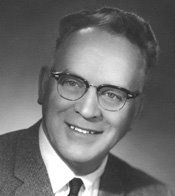We Have Killers Walking Among Us
CATEGORY: Crime-Solving, Murder, How-To
DIVISION: Modern Evil
COMMENT: It couldn't be easier to get away with murder these days. Given the CSI perception of crime-solving, just follow these simple rules and you'll be able to slaughter with a smile on your face and a skip in your step: 1. Never know your victim, 2. Enter and leave the murder scene within seconds, 3. Act entirely at random.
More Murderers Are Getting Away With It
by KAREN HAWKINS
CHICAGO — Despite the rise of DNA fingerprinting and other "CSI"-style crime-fighting wizardry, more and more people in this country are getting away with murder. FBI figures reviewed by The Associated Press show that the homicide clearance rate, as detectives call it, dropped from 91 percent in 1963 _ the first year records were kept in the manner they are now _ to 61 percent in 2007.
Law enforcement officials say the chief reason is a rise in drug- and gang-related killings, which are often impersonal and anonymous, and thus harder to solve than slayings among family members or friends. As a result, police departments are carrying an ever-growing number of "cold-case" murders on their books.
"We have killers walking among us. We have killers living in our neighborhoods," said Howard Morton, executive director of Families of Homicide Victims and Missing Persons. "It is a clear threat to public safety to allow these murders to go unsolved."
The clearance rate is the number of homicides solved in a year, compared with the number of killings committed that year. The solved killings can include homicides committed in previous years.
The number of criminal homicides committed in the U.S. climbed from 4,566 in 1963 to 14,811 in 2007, according to the FBI. The clearance rate has been dropping pretty steadily over the past four decades, slipping under 80 percent in the early 1970s and below 70 percent in the late 1980s. In cities with populations over 1 million, the 2007 clearance rate was 59 percent, down from 89 percent in 1963.
Detectives say homicides generally become harder to solve as time goes by, as witnesses die and memories fade. Yet cold-case detectives say their units are often understaffed. And local police are getting less help for cold cases from Washington. Funding for the main federal program for such cases was cut 40 percent from 2005 to 2007.
Richard Walton, author of "Cold Case Homicides: Practical Investigative Techniques," attributed the falling clearance rate to a "significant change in crime patterns."
Many slayings nowadays are gang- and drug-related killings _ often, drive-by shootings that involve a burst of gunfire so indiscriminate that killer and victim don't know each other.
"And that makes it difficult for investigators," Walton said. "With the gangs and the drugs, we don't have that ability to establish motive, opportunity and means."
>> Read the Article

No comments:
Post a Comment